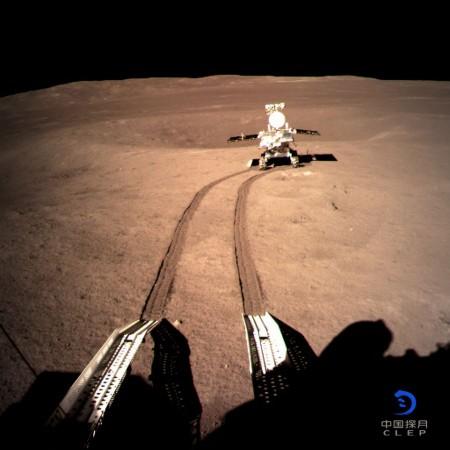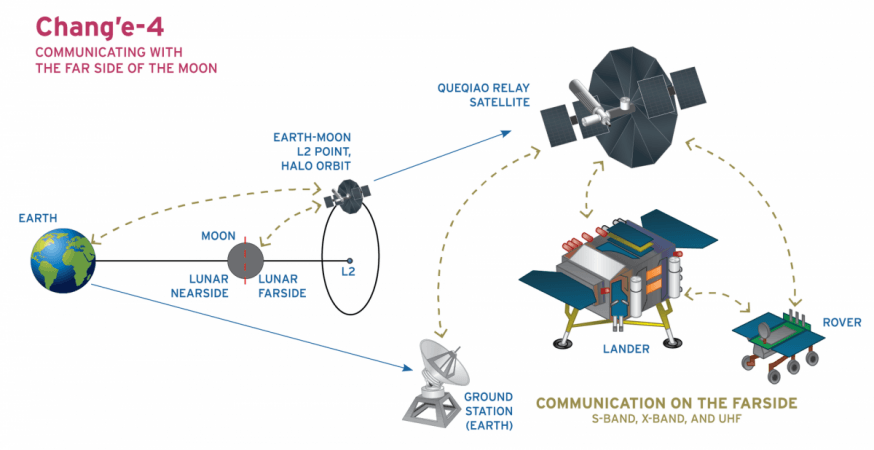
A day when Indians felt sorry for their hard-working space scientists after the Vikram lander of the second Moon mission failed to return signals close to the touchdown, China's Xinhua news agency tweeted about the Chinese moon rover that shut down for the ninth lunar night on the far side since where it reached on January 3 aboard the Chang'e 4 lander.
Yutu-2, meaning the 'jade rabbit', the second robotic rover that the Chinese National Space Administration (CNSA) landed on the lunar surface under the Chinese Lunar Exploration Program (CLEP) has survived eight lunar nights and nine lunar days, shutting down for each night and resuming during the lunar day. A lunar night is as long as 14 nights on the Earth and the orbiter and the lander Chang'e 4 hibernate each night to conserve battery for the startup on the next lunar day. The solar-powered batteries can be charged only during the lunar day that also is as long as 14 days on the Earth.
Chang'e 4 carrying Yutu-2 was taken to the Earth's orbit by a Long March rocket that lifted off on December 7 last year. Chang'e entered the lunar orbit on December 12. Unlike the Moon Mission of the Indian Space Research Organisation (ISRO) that sent the orbiter Chandrayaan 2 as a composite payload to the lunar orbit with the Vikram lander and Pragyan rover attached, Chang'e 4 itself carried the Yutu-2 rover to the far side.
The Chinese solved the problem of inability to communicate with the Earth stations from the far side of the Moon by stationing a satellite, Queqiao, in the 'halo' orbit that is visible from both far side and the Earth. The 'halo' orbit is one that never takes the satellite 'behind' the Moon so that there will be continuous communication with the ground stations on the Earth. China had launched Queqiao six months before the lift-off of Chang'e 4.

Xinhua reports that Yutu-2 has covered 284.66 meters on the far side of the moon to conduct scientific exploration on the virgin territory. The Chang'e 4 probe made the first-ever soft landing on the Von Karman Crater in the South Pole-Aitken Basin on the far side of the moon on January 3, the report says.
Apart from Chinese equipment, the Chang'e-4 mission also carries four payloads developed by the Netherlands, Germany, Sweden, and Saudi Arabia.
India's Pragyan rover, meanwhile, was intended to travel a total of 500 meters. Both the lander, Vikram, and Pragyan were built to last one lunar day and not revive after the lunar night. However, the orbiter, Chandrayaan 2 is expected to continue orbiting the Moon for another year with the possibility of extension to two years, ISRO website says.









!['Had denied Housefull franchise as they wanted me to wear a bikini': Tia Bajpai on turning down bold scripts [Exclusive]](https://data1.ibtimes.co.in/en/full/806605/had-denied-housefull-franchise-they-wanted-me-wear-bikini-tia-bajpai-turning-down-bold.png?w=220&h=138)



